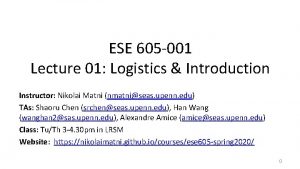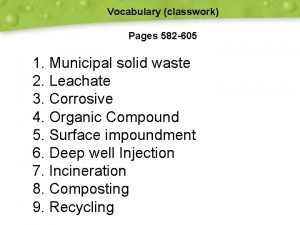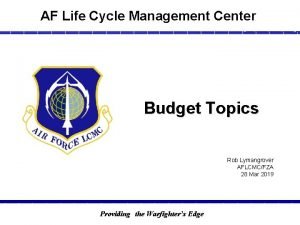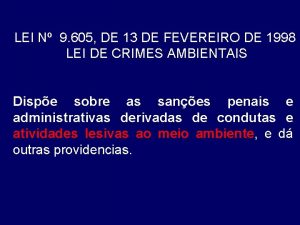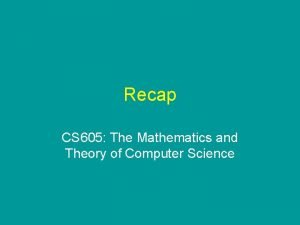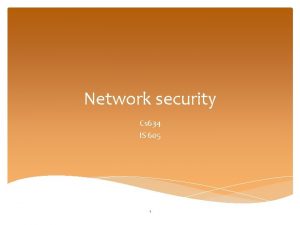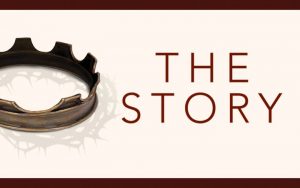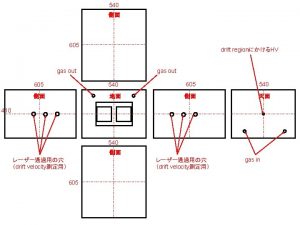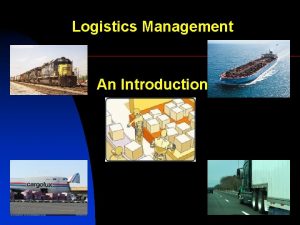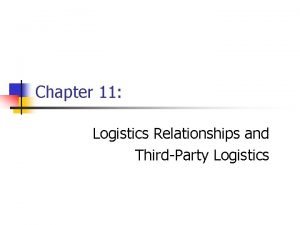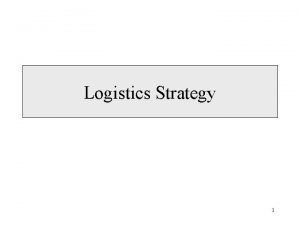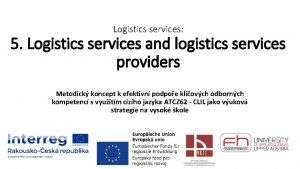ESE 605 001 Lecture 01 Logistics Introduction Instructor








- Slides: 8

ESE 605 -001 Lecture 01: Logistics & Introduction Instructor: Nikolai Matni (nmatni@seas. upenn. edu) TAs: Shaoru Chen (srchen@seas. upenn. edu), Han Wang (wanghan 2@sas. upenn. edu), Alexandre Amice (amice@seas. upenn. edu) Class: Tu/Th 3 -4. 30 pm in LRSM Website: https: //nikolaimatni. github. io/courses/ese 605 -spring 2020/ 0

Course description In this course, you will learn to recognize and solve convex optimization problems that arise in applications across engineering, statistics, operations research, and finance. Examples will be chosen to illustrate the breadth and power of convex optimization, ranging from systems and control theory, to estimation, data fitting, information theory, and machine learning. A tentative list, subject to change, of what we will cover includes: convex sets, functions, and optimization problems; the basics of convex analysis; least-squares, linear and quadratic programs, semidefinite programs, minimax, extremal volume, and other problems; optimality conditions, duality theory, theorems of alternatives, and applications; interior-point algorithms for solving convex optimization problems, and their complexity analysis; applications to signal processing, statistics and machine learning, control, digital and analog circuit design, and finance. 1

Course goals • to give you the tools and skills needed to identify convex optimization problems that arise in applications • to introduce the basic theory of convex optimization problems, concentrating on results that are useful in understanding, improving, and extending computational methods • to give you a deep and foundational understanding of how such problems are solved, and hands on experience in solving them • to give you the background needed to feel comfortable in applying these methods in their own research work and/or applications 2

Prerequisites • This is a math intensive course. A solid foundation in linear algebra (at the level of Math 314), as well as comfort with analysis, probability, and statistics at an advanced undergraduate level is required. • Mathematical maturity: if you have never written a mathematical proof before, this course will be a struggle. • Familiarity with one of Matlab, Python, or Julia. There will be a modest amount of programming involved in the course & homework. • Undergraduates need permission (if you are here, you have already spoken to me). 3

Material • Textbook: free online book Convex Optimization by Boyd & Vandenberghe available at https: //web. stanford. edu/~boyd/cvxbook/ • Software: one of CVX (Matlab), CVXPY (Python), or Convex. jl (Julia), to write simple scripts. We refer to CVX, CVXPY, and Convex. jl collectively as CVX*. • Additional resources: • J. Renegar, A Mathematical View of Interior Point Methods for Convex Optimization, 1998 • A. Ben-Tal and A. Nemirovski, Lectures on Modern Convex Optimization: Analysis, Algorithms, and Engineering Applications, SIAM, 2001 • D. Bertsekas, A. Nedic, and A Ozdaglar, Convex Analysis and Optimization , 2003 • L. El Ghaoui's EE 227 BT Lecture Notes 4

Administration • Lectures: Tu/Th 3: 00 -4: 30 pm LRSM Auditorium • Course website: all lecture slides and homework will be posted on https: //nikolaimatni. github. io/courses/ese 605 -spring 2020/index. html • Canvas (Gradescope): all homework assignments to be turned in using canvas portal, https: //canvas. upenn. edu/courses/1493334 • Piazza: piazza. com/upenn/spring 2020/srs_ese 6050012020 a/home, for discussion and clarifications, sign up at link above, passcode: hyperplane. • Office hours: NM after class, Levine 374, SC Fr 1 -2. 30 room TBD, HW Mon 34. 30 room TBD, AA Wed 2. 30 -4. 30 Moore 317. 5

Grading • Homework (20%): there will be weekly homework assignments (11), handed out on Tuesday, and due the following Friday by 5 pm. You will be given 5 free late days which you may use as you please throughout the semester, after which no late assignments will be accepted. The homework assignments must be Late. Xed and submitted on Canvas via Gradescope. Please use the La. Te. X templates provided by Stephen Boyd's EE 364 b course, and follow the recommended style guide. You are allowed, even encouraged, to work on homework in small groups, but you must write up your own homework to hand in. Homework will be graded on a scale of 0 -4. • Midterm exam (30%): there will be an in-class, 75 minute, closed book, closed notes midterm scheduled for 3/03. • Final programming assignment (15%): there will be a final programming assignment due on the last day of classes 4/29. • Final exam (35%): there will be a take-home final exam during the final exam period. 6

Academic Integrity • Code of Academic Integrity: All students are expected to adhere to the University’s Code of Academic Integrity. • You are encouraged to collaborate with your peers when working on your homework problems, as well as consult other materials. However, when you write up your own solutions, these materials (including your friends!) should be left aside, and you should write up solutions from scratch. • You should also disclose all collaborations in your submission. Collaboration is different from cheating. While the former is encouraged, the latter is defined as attempting, abetting, or using unauthorized assistance (e. g. , a knowledgeable senior who is not taking the class) or material (e. g. , online code). Some other examples of cheating include: copying problem sets/exams, handing in someone else’s work as your own, and plagiarism. This will not be tolerated and will be reported to the 7 university.
